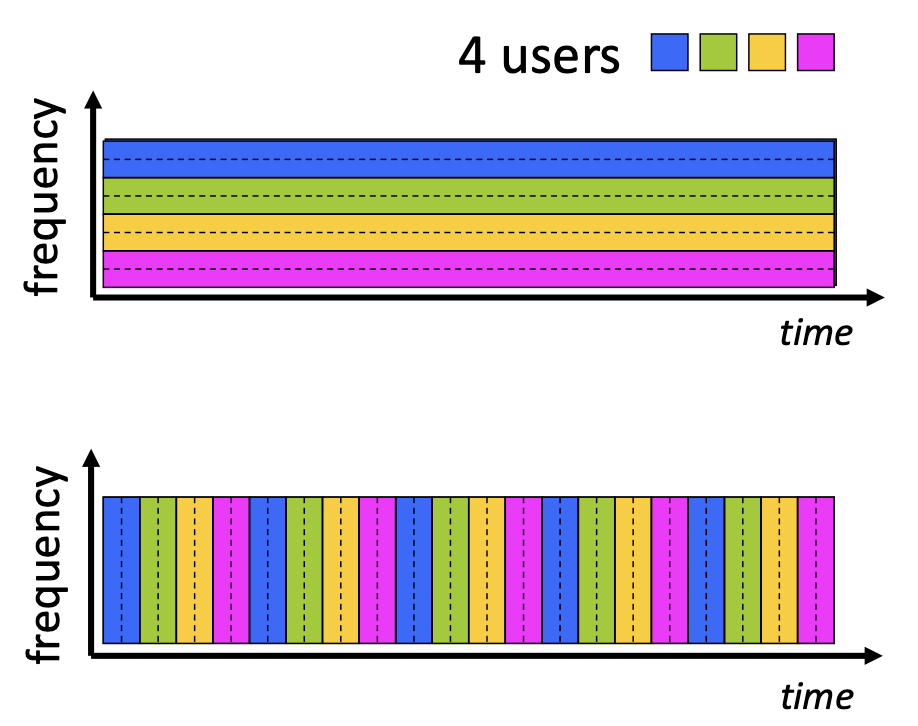Circuit-Switching
In circuit switching, network resources (such as bandwidth or time) are statically allocated into fixed circuits, once and for all, for the duration of a communication session between two endpoints (e.g., a call between two users).
This method is commonly used in traditional telephone networks, where a dedicated circuit is reserved for a call for the entire duration of the communication.

FDM (Frequency Division Multiplexing):
- In FDM, the available bandwidth of a link is divided into distinct frequency bands. Each call is assigned its own frequency band and can transmit at the maximum rate within that narrow band.
- The key concept is that each call gets a fixed part of the total bandwidth, which it uses exclusively, and this part remains allocated to the call for the duration of the connection.
- The diagram shows four users, each assigned a unique frequency band, allowing them to transmit simultaneously but on different frequencies.
TDM (Time Division Multiplexing):
- In TDM, time is divided into periodic slots, and each call is allocated a specific time slot to transmit data.
- Multiple users share the same frequency band, but they take turns transmitting data during their designated time slots.
- The diagram shows four users sharing the same frequency band, but each transmitting data only during their allotted time slots in periodic frames.
Dedicated Resources in Circuit Switching:
- End-to-end resources are allocated and reserved for a specific communication “flow” between the source and destination.
- In the diagram, each link between routers has multiple circuits. For example, a call might be allocated the 2nd circuit in the top link and the 1st circuit in the right link, ensuring dedicated resources for that particular call.
- These circuits are dedicated, meaning that no other communication can use these resources during the call. This results in guaranteed performance (i.e., the call quality remains consistent).